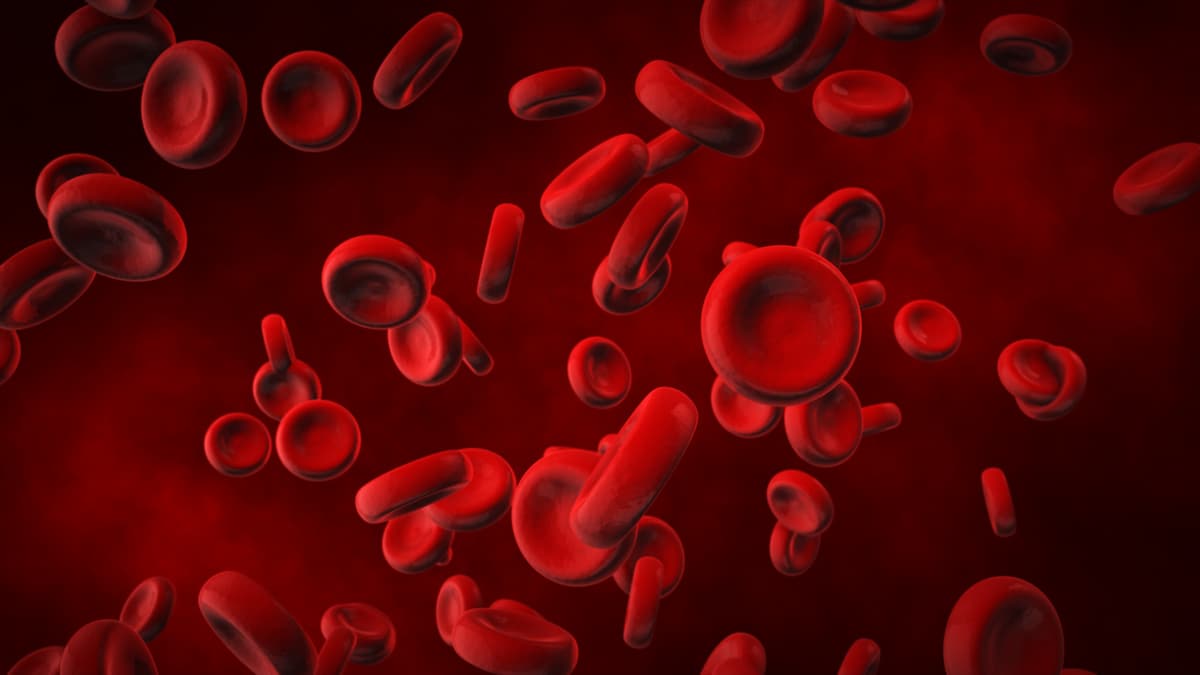Ruxolitinib Appears to Yields Superior Responses in Polycythemia Vera Subtype
Findings from the phase 2 MAJIC-PV trial highlight a superior event-free survival and overall survival following ruxolitinib vs best available treatment in patients with polycythemia vera who were intolerant/resistant to hydroxycarbamide.
Improved event-free survival (EFS) and molecular responses were observed when ruxolitinib (Jakafi) was given to patients with polycythemia vera who were intolerant/resistant to hydroxycarbamide, according to results from the phase 2 MAJIC-PV trial.
Patients who received ruxolitinib in the phase 2 MAJIC-PV trial had a higher overall response rate compared with those who received best available therapy.

In patients receiving ruxolitinib, complete responses (CR) were observed in 43% of patients vs 26% of those on the best available therapy (odds ratio, 2.12; 90% CI, 1.25-3.60; P = .02). Additionally, the duration of the CR was found to be superior in the ruxolitinib arm compared with the comparator arm (Hazard ratio [HR], 0.38; 95% CI, 0.24-0.61; P <.001).
Moreover, patients who had a CR surpassing 1 year (HR, 0.41; 95% CI, 0.21-0.78; P = .01) and those treated with ruxolitinib (HR, 0.58; 95% CI, 0.35-0.94; P = .03) had superior EFS.
A total of 180 patients were eligible for treatment, including 93 patients in the ruxolitinib arm and 87 in the best available treatment arm. The median follow-up was 4.8 years, the median patient age was 66 years, and 58% of patients were male. Of note, 30% and 44% of patients were resistant or intolerant to hydroxycarbamide, and 26% were both.
Patients were given a median dose of 10 mg of ruxolitinib twice daily, with doses increasing over time. For the best available treatment, patients were often given hydroxycarbamide (32%), interferon (15%), or a combination of both (12%).
Regarding CR, a multivariable logistic regression model was designed to include treatment arm, sex, and baseline characteristics such as hemoglobin, number of previous therapies, and history of thrombosis (OR, 2.03; 90% CI, 1.09-3.78; P = .06).
A partial response (PR) was observed in 54% of patients in the ruxolitinib arm and 67% in the available treatment arm during the first year. Between arms, the overall response rate was 97% and 93%, respectively. Patients receiving the best available treatment were more likely to change treatment than those receiving ruxolitinib alone.
In the ruxolitinib arm, 83 patients required venesections compared with 307 in the best available treatment arm. Additionally, 52% in the best available treatment arm had at least 1 venesection vs 29% in the ruxolitinib arm.
For patients receiving ruxolitinib, thromboembolic EFS but not hemorrhage-free survival was significantly improved (HR, 0.56; 95% CI, 0.32-1.00; P = .05). Moreover, the time to the first thrombotic event within 3 years on a trial significantly correlated with average number of venesections (HR, 1.20; 95% CI, 1.08-1.33; P <.001).
Investigators reported a trend towards improved progression-free survival (PFS) in the ruxolitinib arm, with a 3-year PFS rate of 84% (95% CI, 74%-90%) vs 75% (95% CI, 63%-83%) in the best available treatment arm. Additionally, the OS in each respective arm was 88% (95% CI, 79%-93%) vs 87% (95% CI, 77%-93%).
A molecular responses were defined as a 50% reduction in JA2V617F VAF. The median time for molecular response overall was 36 months. Early molecular response at 12 months was associated with improved outcomes, with investigators reporting an event in 24% of responders vs 43% of non-responders (P = .005).
Molecular response at the last sample tested demonstrated an association with better outcomes in the overall cohort, including PFS (P = .001), EFS (P = .001), and OS (P = .01); and for ruxolitinib PFS (P = .001), EFS (P = .006), OS (P = .04); the association was not observed in the best available treatment cohort.
Patients with additional driver mutations had impaired EFS, especially when investigators considered and adjusted for treatment, age, and sex (HR, 1.92; 95% CI, 1.16-3.19; P = .01). In particular, the ASXL1 mutation was predictive of impaired EFS (adjusted HR, 3.02; 95% CI, 1.47-6.17; P = .003).
Between both arms, 147 patients completed baseline symptom assessments, including 76 in the ruxolitinib arm and 71 in the best available therapy arm. A total of 39 patients completed assessments after 60 months. Scores were similar between both arms, although the MPN-SAF weight loss score differed at 1.7 in the ruxolitinib arm vs 0.7 in the best available therapy arm.
In the ruxolitinib arm, there were durable improvements noted in the total symptom score (TSS) at 52 months. A total of 115 patients had available MPN-SAF TSS scores at baseline and 1 additional timepoint. Of these patients, 30% of those in the best available therapy arm and 61% in the ruxolitinib arm had a 50% or greater TSS reduction.
There were more than 5 time points that showed a statistically significant symptom reduction in the ruxolitinib arm, including for fatigue, early satiety, night sweats, itching, and bone pain.
The most common adverse effects were gastrointestinal disorders and vascular disorders. In patients receiving ruxolitinib, infections were more common, such as respiratory, genitourinary, and cutaneous herpes zoster. Regarding death, there were no infection-related deaths or atypical infections.
Reference
Harrison CN, Nangalia J, Boucher R, et al. Ruxolitinib versus best available therapy for polycythemia vera intolerant or resistant to hydroxycarbamide in a randomized trial. J Clin Oncol. Published online May 1, 2023. doi:10.1200/JCO.22.01935
Navigating AE Management for Cellular Therapy Across Hematologic Cancers
A panel of clinical pharmacists discussed strategies for mitigating toxicities across different multiple myeloma, lymphoma, and leukemia populations.